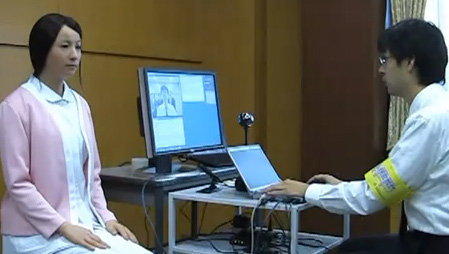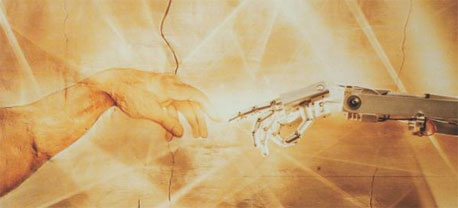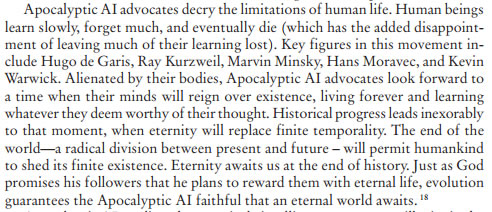 1. How does AAI "set up values and practices designed to transport the human being from a state of ignorance, embodiment and finitude to state of knowledge, immateriality and immortality" (139)?
1. How does AAI "set up values and practices designed to transport the human being from a state of ignorance, embodiment and finitude to state of knowledge, immateriality and immortality" (139)?
2. More specifically, how does it offer a challenge to the way the relation of science to religion is usually approached?
3. Web Search: It is sometimes claimed that Albertus Magnus created perhaps the earliest automaton.
What does this say of relationship of technology to religion hundreds of years ago?
4. If a robot could create genuine art, would you grant it sentient status (an Arts Turing Test)?
5. Creative Challenge: What is the Mind Fire (139-140) and how might it challenge both T.V. evangelists and atheist physicists?
6. How does AAI make "research socially valuable--it promises that robotics will solve society's problems" (140).
 7. Suppose a scientist and a member of the clergy agreed that Geraci's claim that "the virtual world reflects that movement's hope for a transcendent world of religious salvation" (140) is laughable, absurd--would you agree?
7. Suppose a scientist and a member of the clergy agreed that Geraci's claim that "the virtual world reflects that movement's hope for a transcendent world of religious salvation" (140) is laughable, absurd--would you agree?
8. Consider Geraci's claim (140):
Cyberspace has become heaven (or perhaps heaven has become cyberspace) and it provides fertile ground for faith in intelligent machines, uploaded consciousness, and religious promises come to life. ... many residents of the online world Second Life accept the transhumanist dreams of Apocalyptic AI, which helps shape the world in which they live.
If an evangelist were to denounce this view of humanity and the world as "anti-Christian and anti-life," how would you respond?
9. If technology offers "immortality that differs from the promises of traditional Christian thought" (141), who will have the better of the argument, the materialist physicist who believes we expire with our deaths, or the pious religious person fully expecting to survive death?
10. If it proves possible to upload human consciousness into effectively immortal robot bodies, does that entail the end of traditional religion, with its hope of salvation in another world? Will that be how science finally defeats religion?
11. How are robots boundary objects (141) and therefore more liable to be misunderstood?
12. Creative Challenge: Should robot torture be illegal? Should we restrict robots from combat or making iPads 24 hours a day?
 13. Geraci observes that the Japanese are fascinated by robots (142).
13. Geraci observes that the Japanese are fascinated by robots (142).
Click the image at right, watch the video, and then spell out why you think it is a woman acting as a robot or a robot simulating a woman.
Does it matter?

14. Apocalyptic AI, as Geraci sees it, is needed to understand why robots are boundary objects. Explain.
15. Why does the book argue that AAI is a richer notion than science fiction (143) and, therefore, is a new, powerful way to understand the relation of science to religion?
16. As Geraci explains it (143 bottom), college and universities are far ahead of the traditional (and largely mistaken) view that science and religion are locked in combat. Using your experience in this course and Geraci, explain why.
17. Consider Geraci's observation (145):
If robots continue to get more intelligent, the theological problems that surround them may become very serious.
Does the film Blade Runner portray some of those problems?




